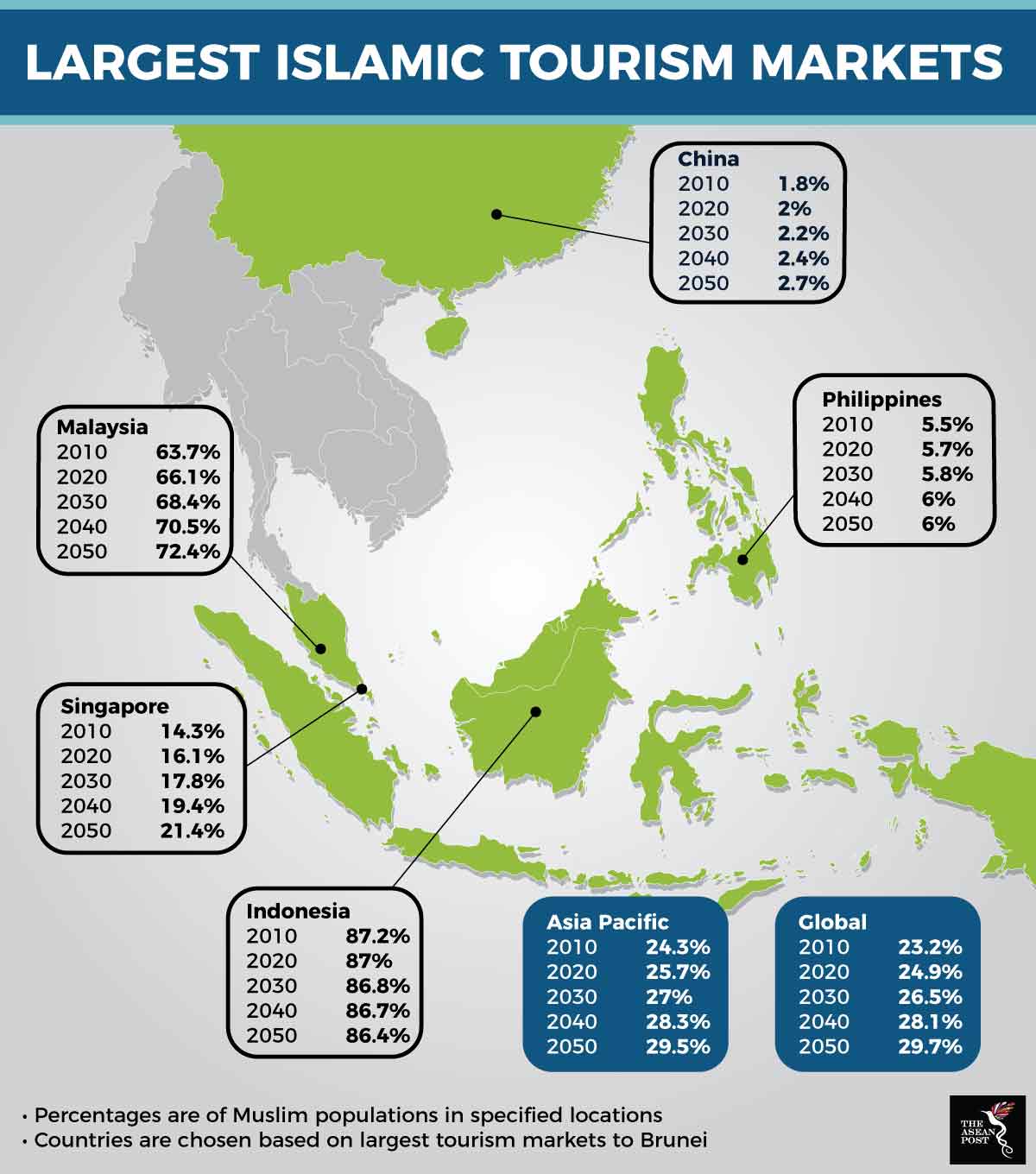In 2017, when speaking about the drop in his country’s tourism sector, an unnamed government official suggested that Lao PDR should put more effort into attracting tourists from Muslim countries in the region. He said that by providing prayer rooms in public places along with promoting halal (permissible or lawful in traditional Islamic law) restaurants, the country would be more welcoming to Muslim visitors. While most other ASEAN countries are relatively Muslim-friendly tourist destinations, Brunei in particular could actually become a haven for them.
Senior economics officer of the Asian Development Bank (ADB), Pilipinas Quising once said that Brunei’s strict Islamic laws could hamper the country’s initiative to become a tourism hotspot. The internet, too, is full of netizens who have either visited Brunei or as citizens have expressed the same sentiment. Brunei implemented hudud (punishments under Islamic law) in May 2014.
However, statistics from the Pew Research Centre seem to paint a different picture. According to the centre’s growth projections, the number of Muslims around the world is expected to grow steadily to 24.9 percent in 2020, 26.5 percent in 2030, 28.1 percent in 2040, and 29.7 percent in 2050, placing it as the second largest growing religion in the world after Christianity. The centre also expects Muslims to outnumber Hindus in the Asia Pacific region by 2030, making Muslims the largest religious group in the region.
A larger Muslim population does not automatically translate to more stringent Muslim rules becoming a pull factor for Islamic tourism. However, couple it with an increasing conservatism across all religions as well as the fact that Islam encourages its followers to travel and Brunei might be sitting on a potential goldmine.
Increased conservatism
Jeffrey Kenney, professor of religious studies at DePauw University, tried to explain a rise in conservatism by saying that around the world, the rise of nationalism has been accompanied by the leaning towards traditional religious pieties and institutions – even when nationalist leaders themselves are anything but religious.
“In the Muslim-majority world, the rise of militant movements has pushed mainstream or moderate religiosity to the right, even when the overall feelings of individuals remain steady. And in authoritarian settings, found all too often in the Muslim-majority world, governments incline toward conservatism to prove their religious legitimacy to the masses, which tend to be more conservative than liberal,” he told The ASEAN Post.

“Such governments are more often than not secular, but religious conservatism provides a good public cover.”
Observers also agree that Malaysia and Indonesia have seen a rise in Islamic conservatism. Mohamed Nawab Mohamed Osman, who currently works at the S. Rajaratnam School of International Studies and does research in Political Islam in Southeast Asia, recently wrote that the turn to Islamic conservatism is likely to gain momentum in Malaysia especially with the rise of neo-Salafism (a hard-line school of thought within Islam).
“Additionally, the growing strength of neo-Islamist movements and the replacement of increasingly moderate Islamist parties by such movements will continue to enhance the turn to conservatism,” he added.
As for Indonesia, a study by the ISEAS-Yusof Ishak Institute in 2017 titled “Indonesia National Survey Project: Economy, Society and Politics” found that an overwhelming 91 percent of Muslim respondents think there will be various benefits to the implementation of Syariah (Islamic law) in the country, with 67 percent saying the most important benefit will be safeguarding the moral fabric of society. Only a mere nine percent of respondents believed the benefits of Islamic law “would be very limited or null”.
The survey also found that 63 percent of Indonesians support punishing blasphemy against Islam. Of these, 58 percent also felt it important to vote a Muslim leader into office. Meanwhile, 82 percent considered the wearing of the hijab (Islamic headscarf) an important outward sign of Islamic religiosity for women.
Muslim visitors
According to a report by travel website HalalTrip in 2017, Muslims aged between 18 and 36 are projected to spend more than US$100 billion annually on travel by 2025, almost double the figure in 2016. Douglas Quinby, an Atlanta-based travel analyst at research firm PhoCusWright Inc., referred to the market as an overlooked segment that the broader travel industry should look at and be prepared to cater to.
Currently, the top destinations for millennial Muslims in the region are Malaysia and Indonesia, nations where the religion’s followers make up a majority of the population. This fact proves that conservatism in the two countries – as discussed earlier – has not hampered the tourism sectors there.
Moreover, according to Brunei’s Ministry of Primary Resources and Tourism, Malaysia and Indonesia have consistently been among Brunei’s largest tourism markets with Malaysia constantly on top of the list since 2015. In 2015, of the 218,213 arrivals that came through the Brunei International Airport, 26.6 percent came from Malaysia and 7.9 percent were from Indonesia. In 2016, of the 218,809 tourists that flew in by air, 24.8 percent were from Malaysia while 9.5 percent came from Indonesia. In 2017, of the 258,955 arrivals by air, 23.2 percent came from Malaysia and 8.7 percent from Indonesia.
By choosing to be more conservative, some observers may look at Brunei with a concerned eye. While human rights watchers have their own legitimate reasons for doing so, Brunei – at least – seems to have found a niche market that could help it diversify its economy.
Related articles:
